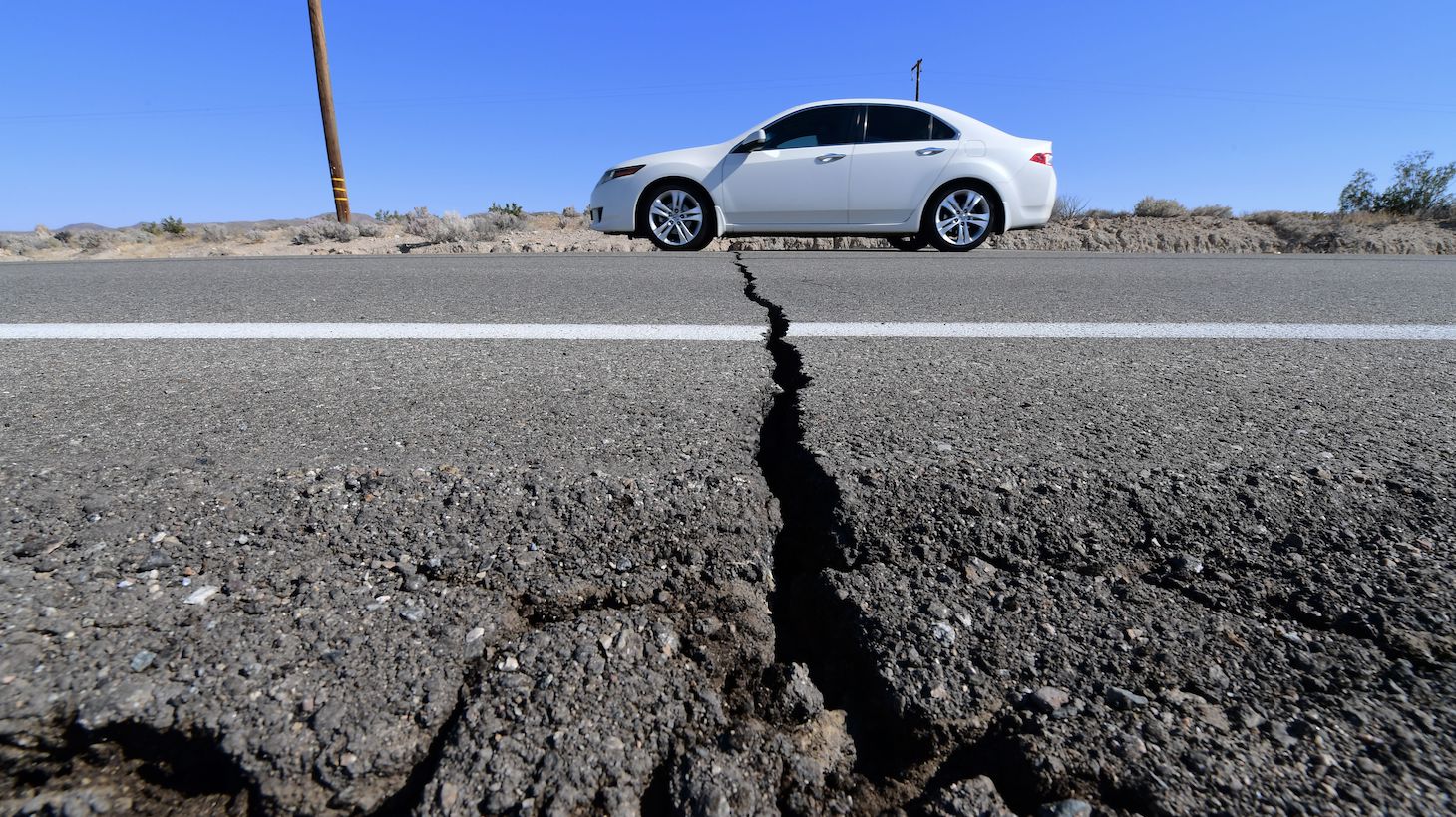On July 31, 2012, Maggie de Grauw looked down at the Pacific Ocean from a plane traveling to New Zealand from Samoa and saw something strange: a large, diffuse brown mass, roughly the size of Andorra, floating in the middle of the ocean. She didn't know it at the time, but she had noticed the two-week-old remains of the largest undersea volcanic eruption ever documented by humankind, an explosion 10 times larger than the 2010 Eyjafjallajökull eruption. If de Grauw hadn't thought to take some photos and send them to a volcanologist, there's a good chance we would never have known that the historic eruption even happened at all.
"Probably about 70 percent of the volcanism that happens on Earth, especially the biggest ones, actually happen underwater in the ocean," Brent Delbridge of the Los Alamos National Laboratory in New Mexico told me. "We don't even see them, and we don't even know that they're happening." In February 2020, Delbridge published a paper on the explosion, known as the Havre eruption, and its effects on ocean dynamics, a better understanding of which will help scientists understand not just aquatic volcanism in the present, but also its role in the history of Earth. Delbridge, who researches seismology for Los Alamos, is interested in what he terms the "energetics of the Earth," or how the dynamics and structures of the planet express themselves to us on the surface. Mostly they express themselves through earthquakes, though Delbridge's research is focused less on the causes or effects of earthquakes, but rather what they can reveal about the deep Earth.
We know, with a high degree of certainty, what's between us up on the surface and the center of the Earth, 3,963 miles beneath our feet. But knowledge of the inner Earth will always be constrained and imprecise, because we can't go down and simply take a rock sample from the solid iron core, where the temperature is 10,800 °F and the pressure is 3 million times higher than on the surface. All we have is what the Earth burps up in volcanoes and earthquakes. To continue this unfortunate metaphor, researchers like Delbridge examine the burps to see what the Earth ate for dinner. By examining seismic records of how earthquakes resonate through the Earth, we can work backwards and fine-tune our models.
A narrow window into the inner Earth matters more than it might seem, though most people are more interested in the burps themselves for fairly obvious and good reasons. San Francisco is overdue for the Big One; 20,000 people in Japan (and one person on the other side of the Pacific) died in the 2011 Tōhoku earthquake and tsunami; and one day Seattle will be destroyed by a violent shudder. The good news is that the state of monitoring and detection is highly advanced. Within seconds of an earthquake's onset and sometimes before shaking begins, seismologists can usually determine its point of origin and rough magnitude. Systems like ShakeAlert can send out warnings to public transit systems and other vulnerable infrastructure nodes, hopefully getting everyone prepared to buckle down. "All those systems are just leveraging that the speed of light is faster than the speed of sound in rock," Delbridge said. "They can send this signal elsewhere at the speed of light, and an optical cable, faster than the wave is coming. But we don't have any way of really predicting that that wave is coming."
Prediction is the Holy Grail of seismology; the ability to divine when and where exactly earthquakes will occur would give the human species an unprecedented mastery over our planet. And if we're this good at detection, surely we can crack prediction, even if we can't do it now, right? Well, no.
"Mathematically, we actually know it's worse than that," Delbridge said. "We know that we won't be able to predict earthquakes." Any hypothetical predictive model is undone by the truths of chaos theory. The system is too sensitive to initial conditions to ever be reliable. "Unless we had every sensors covering every centimeter of the Earth, through depth, we're just never going to be able to predict when exactly that that earthquake is going to happen," Delbridge said. Knowing that San Francisco will be rolled by a large earthquake at some point in the next decade is far less actionable than knowing it's coming in exactly 24 hours.
Still, there are some breakthrough possibilities in detection, specifically on the seafloor. "One of the cooler advances in the next decade or two is in something called dark fiber and distributed acoustic sensing," Delbridge explained. Using lasers, researchers will use "communication cables that used to be buried on the ocean floor and they turn that into just a string of seismometers. Granted, they're not good seismometers compared to what we use now, but they're really good because they're on the ocean floor. That's going to change the observational paradigm on these ocean-based earthquakes and volcanoes."
So what good is changing that observational paradigm, and more broadly, where is the frontier of seismologic research if it's not predicting earthquakes? There are several, but my favorite, and the one I discussed with Delbridge, is space. "If we know something about [a planet's] formation properties," Delbridge said, "maybe we can say something about your potential for having mantle convection and therefore an atmosphere."
Consider our own planet. We live on Earth's crust, a tiny layer of what is essentially floating pond scum atop the mantle, a layer comprising five-sixths of the planet's volume that is made up of solid silicate rock, yet behaves like a very goopy liquid across geologic timescales. Rocks are hotter closer to the center of the Earth and therefore rise, creating convective movement within the mantle. This motion means that the harder outer shell of the Earth (the crust and upper mantle) is fractured into a series of plates, which spread and consume each other as their drivers move them. This is known as plate tectonics, the author of such crowd favorites as the Himalayas (when India slammed into the Asian plate), the Pacific Ring of Fire (where the Pacific Plate is being pushed down into the Earth and more or less being set on fire), and the near-perfect jigsaw coastlines of eastern South America and West Africa (when the Atlantic unzipped along its mid-ocean spreading ridge, as seen below in Iceland, located right on the spreading ridge).
Plate tectonics is thought to be a borderline essential prerequisite for a planet to sustain life, as it allows gases to rise to the surface of the planet as it cools. In our case, we owe the presence of our atmosphere to the dynamics of our mantle. We also owe the survival of our atmosphere to the Earth's magnetic field, which is generated by the dynamics of the liquid and solid core. Without either protective layer between Earth and the harsh emptiness of space, there would be no life, which is why seismology is a crucial building block in astrobiology. Knowing what is inside of a planet can tell you a good deal about its biological capacity, though it's not deterministic. For example, Venus's composition and size is similar to Earth, though the planet is too hot for plates to form and harden. Even then, the planet has an atmosphere, and it may have sustained life billions of years ago before it was cooked from the inside by the runaway greenhouse effect. Venus is a good example of how other methods of outgassing can sustain atmospheres and create the right conditions for life, though since it's too hot to put spacecraft down, we're more interested in Earth's other neighbor, Mars.
NASA's InSight lander, currently on Mars, is equipped with a seismometer. Two weeks ago, researchers published the first directly observed studies into the planet's deep interior. "The mantle is much thinner than we thought," Delbridge said. "We used to think the water content of our mantle is what allows mantle convection, but it turns out that—once we look at Venus, Mercury, and Mars—as a proportion of the planet, we have a huge mantle." Because the core of Mars is relatively voluminous and the mantle relatively thin, there is less mantle convection, and therefore, no plate tectonics, no atmosphere, and no life. InSight did detect marsquakes, though they are produced by the shrinking of Mars, which is cracking as it cools. "You want to put more constraints on [exoplanet habitability] than just your distance from the sun," Delbridge said. "If we know something about your formation properties, maybe we can say something about your possibility of having mantle convection."
The key here is a detailed understanding of Earth's own formation properties and inner dynamics, which we can only get a glimpse of when the planet grumbles or shudders. Learning about the possibility of life in far-flung galaxies from our own earthquakes could sound like a real leap, but consider how much new information about our own planet scientists learned from the Havre eruption. When we discover how our home world works, we also discover more widely applicable truths.







